15 Ways to Generate More Leads on Your Website
Key Takeaways
- Website lead generation strategies increase visibility to your target audience, raising awareness of your products/services.
- By analyzing data, lead generation strategies help build a steady stream of high-quality prospects, personalize marketing efforts, and identify prospects based on demographics, content needs, search intent, and job titles.
- Effective lead generation strategies gather a community of potential clients, enhancing engagement opportunities with your sales team.
Filling the sales pipeline is a constant challenge for content heads, marketing managers, and solopreneurs. Your business’s goal is to sell, and you need qualified leads (or ideal customers) to market your products or services to.
A sure way to attract these ideal customers is through website lead generation strategies. These strategies increase your visibility to your target audience (on search engines) through valuable and engaging content. This, in turn, increases their awareness of your products/services and potentially incites interest in your offerings.
Lead generation strategies help to:
- Build a steady stream of high-quality prospects ready to engage with your sales team.
- Gather a community of potential clients for your products or services.
- Identify prospects by analyzing current data about the leads’ demographics, content needs, search intent, and job titles (especially in B2B).
- Personalize your marketing efforts to your specific audience.
To get started, here are 15 actionable steps for generating more leads from your website.
Website Lead Generation Strategies
The typical lead generation strategy includes collecting valuable information about your target audience’s interests and needs.
The information in creating outstanding content that addresses their pain points and shows your unique value proposition (USP). With so many strategies, which are the ones that increase website leads faster? We’ve broken them into five sections:
Foundational Website Optimization Strategies to Increase Website Leads
1. Optimize your Landing Pages to Increase Traffic and Conversion
Your landing pages are where visitors learn about your business and should include a clear description of the action you want them to take.
Your landing page may be a web page for a product page, product resource, a webinar, or a pricing page. Whatever it is, it should guide the reader to an obvious call to action (CTA).
This could be to fill out a form, download a content asset, sign up for a free trial, or buy a product. Whatever it is, get started by:
- Optimizing your landing pages for SEO. Use relevant keywords in your titles, meta descriptions, headings, and content to increase the visibility of these web pages.
- Address their pain point and articulate how your product (or services) alleviates it.
- Communicate your USP. Without boring stories, show your product or service’s most important features (and benefits).
- Include social proof to increase trust.
- Include a compelling CTA to nudge readers to what you want them to do.
You can review your landing pages regularly to find what you can optimize to increase conversion rate. This is important if you have heavy traffic volume but low conversion rates.
2. Improve Lead Generation Forms
Your emphasis on lead gen forms should be quality over quantity.
This means you should choose complex lead generation forms — over simple ones — to filter out visitors naturally. Why?
Forms that ask for more than a name and email address require more commitment from the visitor. They go a step further to ask questions like:
- What is your current biggest challenge or pain point in (industry/niche)
- What is your company size?
- What factors do you consider before choosing a (niche) product?
- Who are the key stakeholders involved in evaluating and approving new product purchases?
- What are your top business priorities right now?
A lead gen form from Zapier looks like this when you click on the Contact Sales navigation bar:
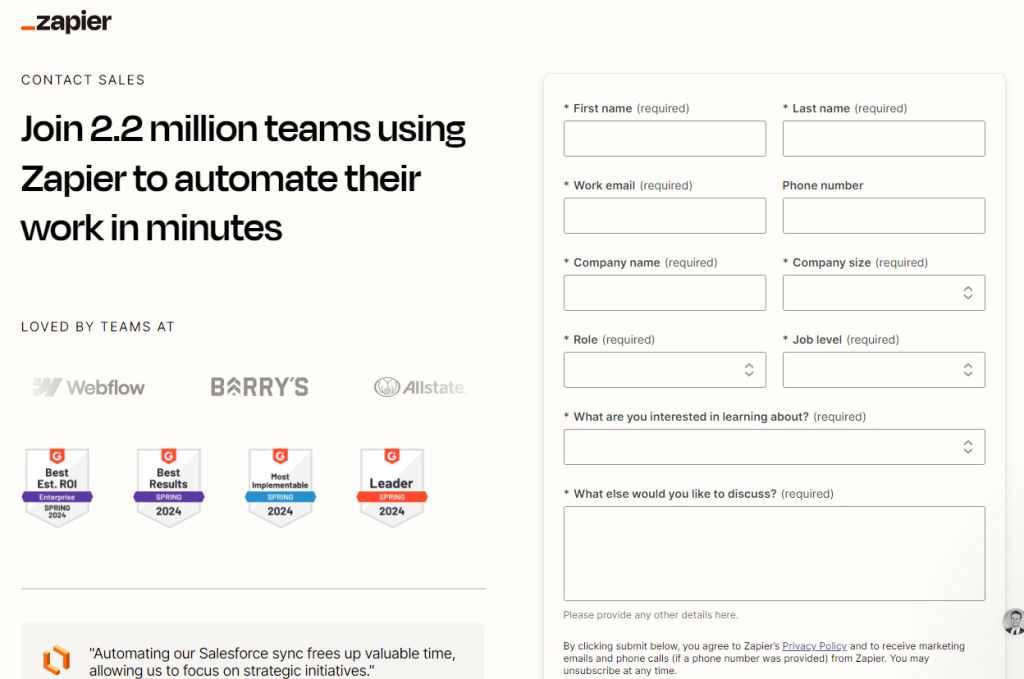
These questions are natural filters, depending on where the forms are used (in a signup for a free trial or lead nurturing stage).
They’ll encourage those interested in your product to share more details about their pain points and what you can do for them. This will help you understand how you can help them.
To make this lead generation strategy effective, do these:
- Ask for relevant information that will help you qualify leads effectively.
- Explain why visitors should fill out your form. What will they gain in return for their information? Offer a compelling incentive, such as a valuable resource, a free consultation, or a promise. Like Zapier did with “join 2.2 million teams using Zapier to automate their work in minutes”.
Next…
3. Provide a Great Web User Experience
A poorly designed website can drive visitors away before they explore your offerings. A great UX, on the other hand, captures attention, creates a positive first impression, and encourages them to stay longer and learn about what you do.
A website experience that keeps visitors engaged can increase click-through rates because it is easy to navigate. This means more people will fill out your lead gen forms, and you’ll ultimately increase the volume of qualified leads.
Some critical elements of a great web experience include:
- Clear navigation
- Fast loading times
- Mobile responsiveness
- Visually appealing design
- Compelling content
- Clear calls to action
4. Use Clear and Strong CTA and be Strategic about Where you Place It
CTAs provide clear instructions about what you want the visitor to do next. When personalized, this directness can increase the likelihood of them taking action by over 202%.
CTAs also create a sense of urgency and encourages visitors to act now rather than later. This can be particularly effective when combined with doubt-removers or exclusive deals like Nomad Cooks does:
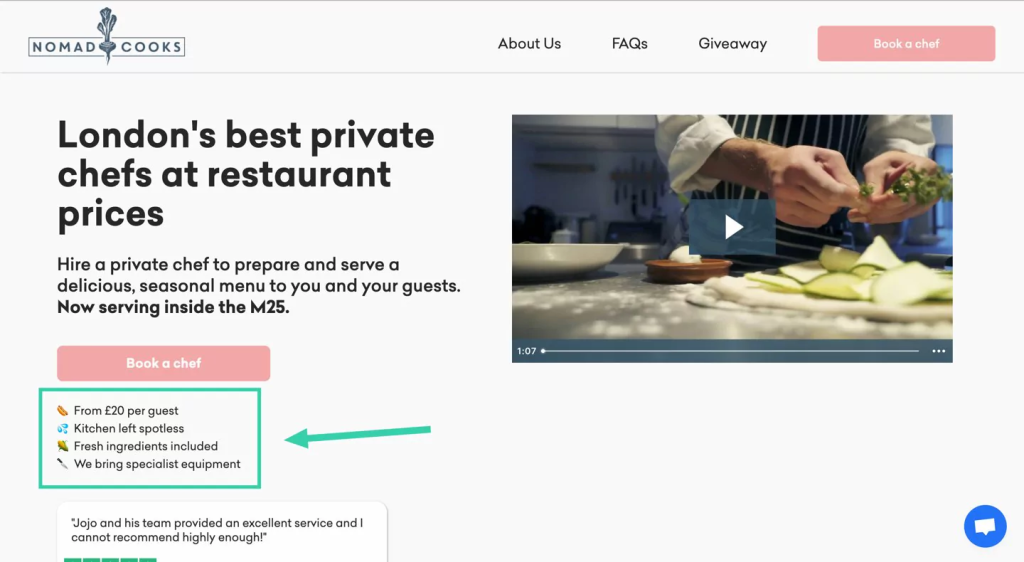
Where can you place CTAs? Consider:
- A section of your website that’s visible without scrolling. This ensures that visitors see it immediately upon landing on your page.
- Where there is less clutter and more white space to potentially increase conversion rates by 232%.
- Place it at the end of a long landing page to potentially increase the conversion rate by 304%.
- Integrate secondary CTAs throughout your website content, especially in the middle and end of blog posts or product descriptions.
- Use popup and slide-in CTAs to grab attention and offer a special deal or incentive (more on pop-ups in no. 15).
HubSpot uses slide-in CTA to promote their resource on market research kit. However, be mindful not to overuse pop-ups and slide-ins; they can become intrusive.

Content Marketing Strategy to Increase Website Leads
5. Create Lead Magnets
Lead magnets are valuable resources offered in exchange for a visitor’s contact information. They establish a mutually beneficial relationship: you provide valuable resources to resolve pain points, and in return, you receive data on prospects for your products/services.
Lead magnets also help you demonstrate your expertise. This builds trust and credibility in your product, making visitors more likely to consider your paid products or services.
Types of lead magnets to increase website leads or convert leads into paying customers:
- In-depth guides or eBooks on pain points relevant to your target audience.
- Practical resources like checklists or templates. They offer immediate value and are easy to implement. It’s better if they need your solutions to fully implement it, as Zapier did with this guide on lead management automation.
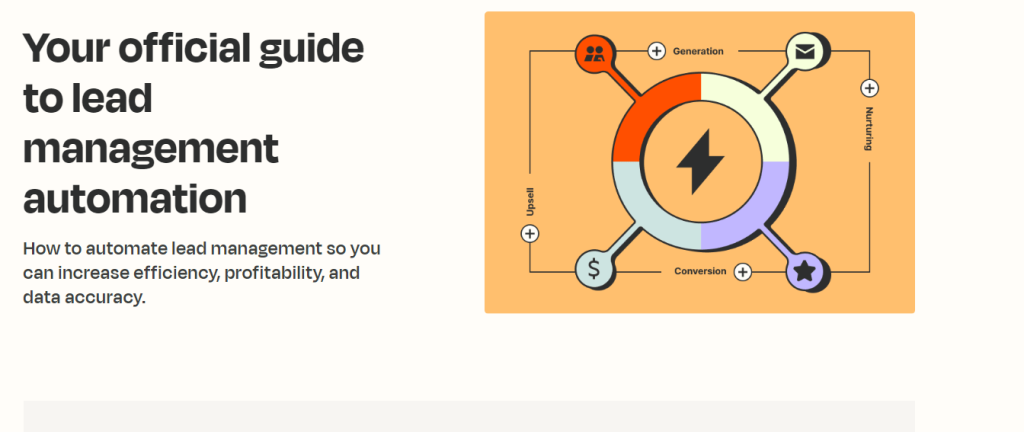
Or, as Mutiny did with how to build a revenue generating ABM program:

- Host a webinar or create short online courses to engage and attract high-quality leads.
- Offer a discount on your product (or a free trial) to entice prospects to become paying customers. Hashnode did this after signing up for their developer blogging platform:

6. Write and Publish Case Studies
Case studies are concrete evidence of how you have helped other companies, not empty claims. They also attract ideal customers who want the solutions you’ve achieved for your clients.
To increase your website lead generation efforts, use case studies to show measurable results and benefits your clients enjoy through you.
You can also tailor your case studies to specific industries or use cases that reflect your multiple target audience and their priorities.
When potential leads see a success story that mirrors their challenges and aspirations, they’re more likely to envision themselves as your next success story.
To further position your product as the ideal solution, highlight the unique features, approaches, or processes that differentiate you from competitors. Aside from case studies, invest heavily in comparison posts like the AI writing tool PepperContent does:

Outreach and Engagement Strategies to Generate Leads from Your Website
7. Use Live Chat to Engage Visitors in Real-time
Live chat captures visitor attention by offering direct communication between your business and prospects. While researching case studies of powerful CTAs for this blog post, I stumbled on Nomad Cooks. Their live chat option stuck out to me:

The popup live chat allows me to easily
- Engage with the business
- Tell them what I need, how and when they can help.
- It also helps them address my queries and concerns as fast as possible.
Here’s another example from Namecheap, a domain hosting platform:
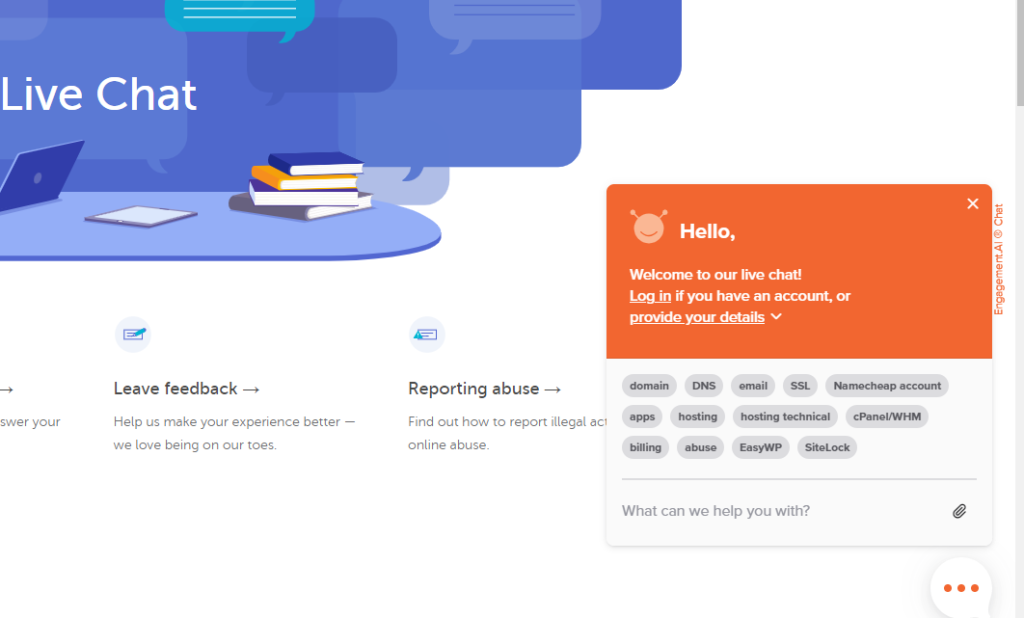
What makes Namecheap’s live chat style better is that they provide different links to the different challenges you may have with their product.
Visitors and users can click on any of these buttons to explain their challenge and expect a response in minutes. In my experience, it took less than 2 minutes.
Namecheap’s live chat support allows
- Visitors and users to choose the product feature they have trouble with
- Gain access to a member of the support staff in minutes
- Eliminate the frustration of waiting for email responses or navigating complex contact forms
In Nomad Cooks and Namecheap, the live chat option can increase positive user experience, which can increase the conversion rate.
To get started, use an attractive preview so visitors can easily engage the chatbot when they can’t find the solutions they seek. According to 55% of B2B marketers, live chat increased lead conversion by at least 10%, with many seeing up to 20% increase, so it’s an essential add to your user experience.
8. Consider Contests or Giveaways
In partnership with eBay, Capital FM held a competition in September 2022 where listeners could win £1,000.
To apply, listeners had to go to the Capital FM website and fill out a form with their details. (This was a website lead generation strategy for Capital FM, as they could use it to nurture registrants into becoming active listeners of their channel.)
Also, registrants had to listen to Capital FM from Friday, September 9th, 2022, to Sunday, September 11th, 2022. When they heard a specified song played on air, they had to text a keyword to a short code (83958).
The text message entry system would reset after each competition round, and one winner was selected randomly from all eligible entries.
The £1,000 prize was awarded to the selected winners.
Capital FM’s giveaway strategy increased its brand visibility and gave them valuable leads who could become active channel listeners. What should your contest look like?
- For a B2B business, you can offer a free year of your product or a personalized consultation for participants who fill out a survey and share their business challenges. Choose a random winner.
A B2B marketer and author, Eddie Shleyner, used a similar strategy to promote his book:

This strategy will help the author expand the visibility of their book. It will also increase the volume of people who join the waitlist (and become nurtured into wanting to buy the book).
- For B2C, you can offer a chance to win a timed shopping spree (for your consumer products) or request any service in exchange for email signups and social media followers.
Contests and giveaways work because they create excitement and encourage people to interact with your brand. It can also expand your reach to a broader audience who may need to learn about your business.
You can use it to attract relevant brand visibility, fill your sales pipeline, and find ideal customers from different channels.
9. Offer Free Tools or Free Trials for SaaS products
Many potential customers hesitate to commit to a paid subscription without first experiencing the product.
This is usually because they’re uncertain about the value of what they’re paying for, want to minimize the risks of wasting money or have multiple options.
Free tools or trials remove this barrier. They allow users to explore your product without financial risk and provide an opportunity to explore its value.
When your ideal customers experience the benefits firsthand, they are more likely to see the need for your solution and convert into paying customers.
Free tools (or trials) also allow you to collect valuable user data. You can track how users interact with your product and the features they use the most, and you can gather feedback on their opinions about your solution.
You can use this information to improve your product/services and marketing strategies.
You can also use their data to nurture leads through targeted email campaigns to provide additional resources and incentives to encourage them to upgrade. Here’s an example from Hashnode:

10. Host a Webinar or an Online Event
Webinars and online events show your expertise on niche topics or pain points. They also help you educate your audience and interact with potential customers.
A company called Convert provides A/B testing and experimentation software for businesses. Their software helps companies grow by learning more about their customers and streamlining processes through experimentation.
However, rather than rely on high-quality content (which they write and promote), they also promote high-value and high-intent webinars. In June 2024, their annual summit had over 800 registrants and more than 400 live attendees.

This was an easy way to attract leads and nurture them into customers.
You can also replicate this strategy by:
- Choosing a niche topic or pain point to discuss.
- Promoting the webinar using an optimized landing page, a promise of what users will gain, clear calls to action, and attracting registrants through social media (and email).
- Also, structure your webinar with a mix of informative presentations, interactive Q&A sessions, and engaging visuals. Show them what to expect in advance to increase anticipation and participation.
- After the webinar, send a follow-up email to attendees with session recordings, additional resources, and a clear call to action on how you can help them.
Traffic and Visibility Options to Increase Website Leads
11. Use SEO to Generate Leads from your Website
SEO helps your website rank higher on search engines for relevant keywords. You’ll attract more qualified visitors actively seeking your solutions when you rank for high-value keywords. This targeted traffic is more likely to convert into leads and customers.
SEO is also important because:
- It is cost-effective compared to paid advertising in generating leads over the long term. While it requires an initial investment of time and resources, the results can be sustained and amplified over time.
- Users often perceive websites ranking highly in search results as more credible and trustworthy. This concept can impact a searcher’s decision to engage with your content and become a lead if your product/service is what they need.
12. Run PPC Lead-generation Ads
Many businesses hesitate to use PPC ads due to concerns about costs and effectiveness. However, PPC campaigns can deliver a substantial return on investment when done right, as we have done for many businesses.
One of our clients, Arsenal Credit Union, a banking and financial service company, got over 239% increase in Google Ads conversions and over 439% increase in Google Ads clicks:

If you’re interested, here’s a complete analysis of how we did it.
So, PPC ads can immediately increase the visibility of high-value, high-search intent lead magnets that already have proven conversion potential.
Why it works:
- Targeted Reach: PPC platforms allow precise targeting based on demographics, interests, and search behavior. This ensures the right audience sees your ads and increases the likelihood of attracting qualified leads.
- Instant Results: Unlike SEO, PPC ads generate immediate traffic and leads. This is great for time-sensitive campaigns or to promote a new lead magnet.
- Measurable Performance: PPC campaigns provide detailed analytics on impressions, clicks, conversions, and cost per lead. This data allows you to optimize your campaigns for maximum efficiency.
- Scalability: PPC campaigns can be easily scaled up or down based on your budget and goals. This flexibility makes them suitable for businesses of all sizes. We discussed this more here and here.
We also wrote about the ROI comparison between SEO and PPC here.
For successful PPC lead generation campaigns:
- Start with high-performing lead magnets. Promote lead magnets that have high conversion potentials.
- Use detailed targeting options to reach your most relevant audience.
- Write a concise, attention-grabbing ad copy that shows the benefits of the content asset you’re promoting.
- Optimize the landing page. Ensure it is relevant to your ads and designed for conversion.
- Then, regularly track and analyze your performance to make data-driven adjustments to improve results.
If you’re considering this and it seems overwhelming, check out our PPC ads solutions here to see how we can help.
13. Add Lead Forms to High-value and High-intent Pages with High Traffic
Visitors on high-value pages are already interested in your product or service. By adding a relevant lead form at the right moment, you can capitalize on their existing engagement and encourage them to take the next step.
This website lead generation strategy is also practical because your high-value pages only attract visitors closer to the decision-making stage. This means they are more likely to be qualified leads actively seeking solutions and ready to engage with your sales team.
Consider adding lead forms to your product or service pages and at the end of an article with high-traffic volume.
A/B Testing and Optimization Strategies to Increase Website Leads
14. Create A/B Testing and Measure the Performance of Each Lead
A/B testing eliminates the guesswork.
By testing different elements of your lead generation campaigns, you can also optimize and improve your results over time. Even small changes (a different headline or call to action) can substantially impact your lead generation efforts.
This helps you understand your audience preferences and behaviors, and you can use this insight to create more effective campaigns.
Read more about A/B testing for lead generation here.
15. Install a Page Takeover Exit Intent Pop and Use Scroll Popups
Most website visitors don’t visit to make buying decisions immediately. Instead, they often search for products, compare prices, or look for store details and then leave.
You risk losing valuable business opportunities if you don’t engage them effectively during their visit.
But you can use exit-intent and scroll popups to recapture their attention and convert them into leads. How?
Exit-intent popups are triggered when visitors click the exit bar (or move their mouse toward the close button or the address bar). Here, you can provide a special discount, a free resource, or a limited-time offer to entice them to reconsider leaving.
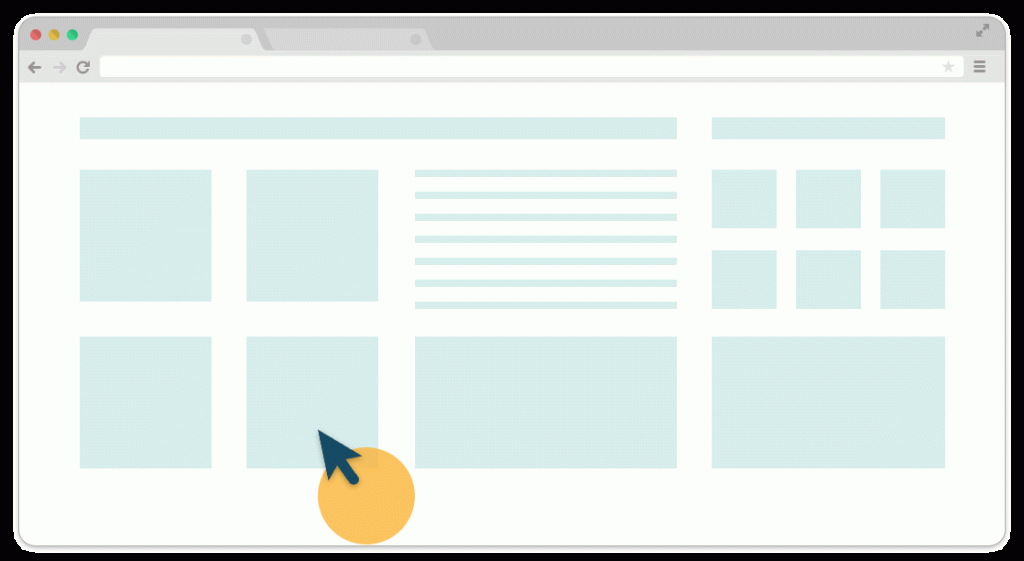
You can also use the popup to show them a content asset they may want to read, preferably one relevant to the page they’re reading. You can use this option to collect email addresses and other information to make them qualified leads for your sales team.
On the other hand, scroll popups appear after a visitor has scrolled a certain percentage down a page. Depending on your page length and content, they can be triggered at different points, such as 50%, 60%, or 70%.
Here’s an example from SEMrush. It was triggered when I was 50-60% into the post:
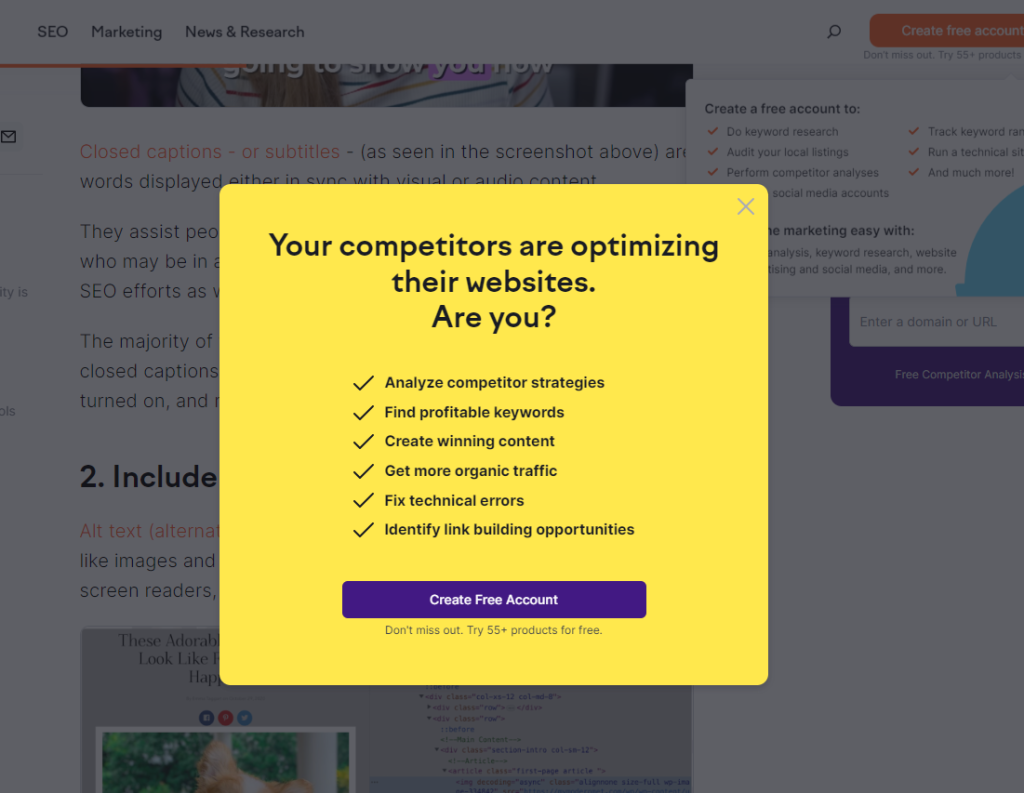
Scroll popups can be customized to the specific content the visitor has viewed. This means you’re offering a non-generic offer or calls to action, which can increase the conversion rate.
Conclusion
Your website is one of the owned channels to generate leads and increase business growth. By optimizing your website for SEO, creating valuable lead magnets, and providing a great web user experience, you can use different tactics to fill your sales pipeline with qualified leads.
We understand it can be overwhelming to choose from the many available options. You can start with either of these website lead generation strategies based on their potential ROI for your business. Lead generation requires continuous efforts and A/B testing, so you can shift focus to another strategy when one fails.
If you need help turning your website into a lead-generating machine, book an intro call with us to discuss your business needs.
